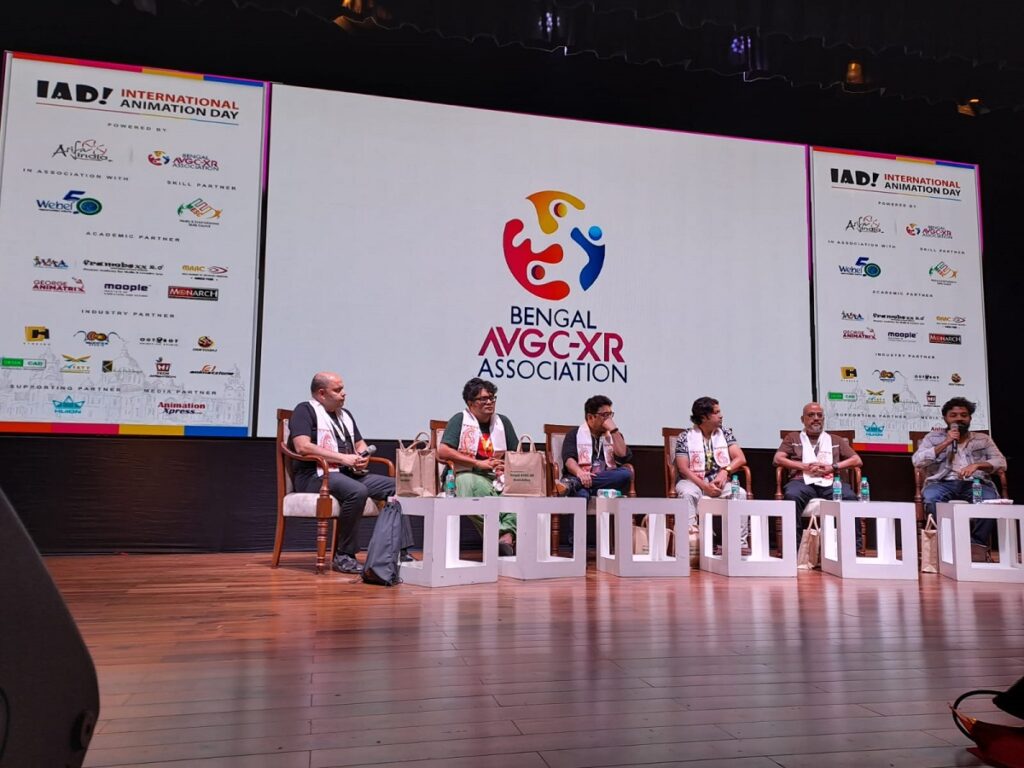West Bengal’s rich cultural heritage, deeply rooted in art and literature, has long nurtured the growth of comics, providing a vivid canvas for imagination through iconic works like Narayan Debnath’s Bantul the Great and Handa Bhonda. However, despite this robust legacy, the Bengali comics industry has struggled to achieve widespread recognition, remaining fragmented and unable to reach larger audiences.
The International Animation Day 2024 celebrations in Kolkata on 13 September featured a panel discussion on ‘State of comic in Bengal/India and how this medium of storytelling is relevant today’ bringing together prominent comic artists and illustrators like Harsho Mohan Chattoraj, Charbak Dipta, Avik Kumar Maitra, Partha Pratim Sarkar, Sourav Dutta, and Sankha Banerjee.
The panellists addressed challenges such as the lack of visibility for artists, low remuneration, and limited public awareness, which have driven many talents to seek opportunities outside Bengal and even abroad. This has stunted the growth of the local comic industry, despite its creative potential.
Moderating the discussion, renowned graphic novelist and illustrator, Chattoraj, best known for Kolkata Kaleidoscope, The Hyderabad Graphic Novel, Chakrapurer Chakkare, brought over a decade of expertise to the conversation. He has also been an active participant in the newly formed Bengal AVGC-XR Association. During the conversation, he emphasised the importance of examining how comics remain relevant in today’s creative landscape.
Banerjee, who explores themes like ancient tales, sexuality, pluralism, and existence through his graphic narrations, illustrations, and installations, strongly advocated for increased funding, believing it could catalyse progress in the industry. Maitra, a freelance comics artist and illustrator associated with the popular Bengali children’s magazine Sandesh, echoed this sentiment, stressing the lack of commercial opportunities in the state.
Award-winning Indian graphic novelist, illustrator and cartoonist, Charbak Dipta, pointed out that a major challenge for Bengali comics is the general lack of awareness of the artists’ works. As media coverage of comics dwindled over time, creators like Dipta—who has represented India at global events such as Comic Fiesta in Kuala Lumpur Malaysia, London Film and Comic-Con, and C2E2—struggled to gain visibility for their projects. Recently, Dipta launched a 360-degree webcomic titled Lublu. He pointed out, “Due to lack of media attention, no one talks about our works or achievements. This limits the circulation of the comic books that are available in the stores.”
With almost 30 years of experience as a journalist, Dutta is known for his graphic novels and comics. He underscored the potential of motion comics, which blend animation and comics at half the budget of animated films. And Banerjee expressed his continued passion for traditional comic books, appreciating the beauty of hand-drawn art.
Sarkar, an experienced illustrator and pre-production artist known for his work in Marvel comics, emphasised the need for the Bengali comic industry to rediscover its voice by creating strong, impactful characters. Maitra added that developing a solid foundation of intellectual property (IP) is critical for the industry’s future.
In response to the discussion, FICCI AVGC-XR Forum chairman Ashish Kulkarni mentioned the importance of collaboration and regional stylization, stating, “We are working on a series of books that incorporate Kerala mural art into comic book form. Similarly, I request the comic creators here in Bengal to come together and create some Bengal-inspired stylisations in a structured manner. With that groundwork, we can approach the government and various corporates for funding support.”
He also advocated for introducing comic art courses in art schools, emphasising that strong foundations in traditional hand-drawn techniques remain essential even in the digital age. Kulkarni concluded by stating that the Bengal AVGC-XR policy includes a comprehensive section on comics, with the association’s goal to establish Bengal as the comic book capital.


